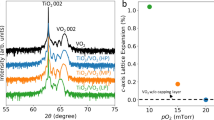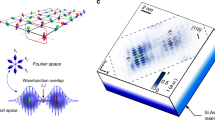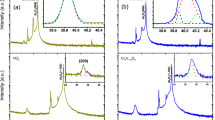Abstract
IN NATURE of July 21, 1923 (vol. 112, p. 100), was published a letter from me giving results I had obtained on the ionisation potentials of copper and silver vapour by the low-voltage arc method. The spectro-scopic examination of these metals is complicated by the fact that the spectrum of the ordinary arc contains large numbers of spark lines. By using a three-electrode arrangement in vacuo such as was used by Foote and Mohler, I have succeeded after some difficulty in obtaining spectrograms of the ultra-violet arc spectrum of silver vapour entirely free of spark lines. The only lines appearing are the first two pairs of the principal series. The wave-lengths of the second pair, as measured by Pina, are not correct. The small quartz spectrograph which was used in these experiments, and was in perfect focus, gave values always within 0.1Å of the calculated wave-lengths quoted by Fowler. This is sufficient evidence that the value of the ionisation potential given in my former letter is incorrect.
This is a preview of subscription content, access via your institution
Access options
Subscribe to this journal
Receive 51 print issues and online access
$199.00 per year
only $3.90 per issue
Buy this article
- Purchase on SpringerLink
- Instant access to full article PDF
Prices may be subject to local taxes which are calculated during checkout
Similar content being viewed by others
Author information
Authors and Affiliations
Rights and permissions
About this article
Cite this article
SHENSTONE, A. Low-Voltage Arc Spectra of Copper and Silver. Nature 114, 501 (1924). https://doi.org/10.1038/114501a0
Issue date:
DOI: https://doi.org/10.1038/114501a0



